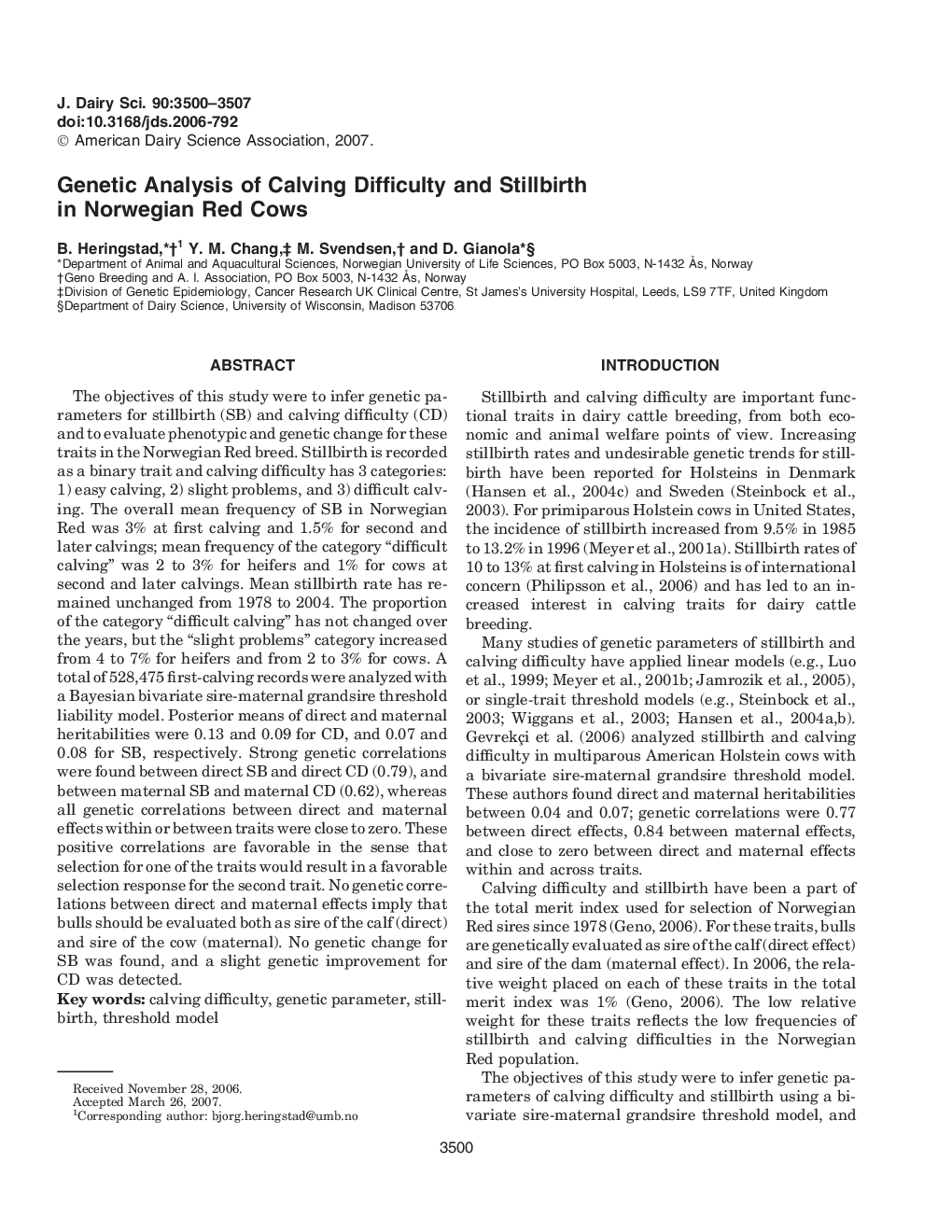| Article ID | Journal | Published Year | Pages | File Type |
|---|---|---|---|---|
| 2440814 | Journal of Dairy Science | 2007 | 8 Pages |
Abstract
The objectives of this study were to infer genetic parameters for stillbirth (SB) and calving difficulty (CD) and to evaluate phenotypic and genetic change for these traits in the Norwegian Red breed. Stillbirth is recorded as a binary trait and calving difficulty has 3 categories: 1) easy calving, 2) slight problems, and 3) difficult calving. The overall mean frequency of SB in Norwegian Red was 3% at first calving and 1.5% for second and later calvings; mean frequency of the category “difficult calving” was 2 to 3% for heifers and 1% for cows at second and later calvings. Mean stillbirth rate has remained unchanged from 1978 to 2004. The proportion of the category “difficult calving” has not changed over the years, but the “slight problems” category increased from 4 to 7% for heifers and from 2 to 3% for cows. A total of 528,475 first-calving records were analyzed with a Bayesian bivariate sire-maternal grandsire threshold liability model. Posterior means of direct and maternal heritabilities were 0.13 and 0.09 for CD, and 0.07 and 0.08 for SB, respectively. Strong genetic correlations were found between direct SB and direct CD (0.79), and between maternal SB and maternal CD (0.62), whereas all genetic correlations between direct and maternal effects within or between traits were close to zero. These positive correlations are favorable in the sense that selection for one of the traits would result in a favorable selection response for the second trait. No genetic correlations between direct and maternal effects imply that bulls should be evaluated both as sire of the calf (direct) and sire of the cow (maternal). No genetic change for SB was found, and a slight genetic improvement for CD was detected.
Related Topics
Life Sciences
Agricultural and Biological Sciences
Animal Science and Zoology
Authors
B. Heringstad, Y.M. Chang, M. Svendsen, D. Gianola,
